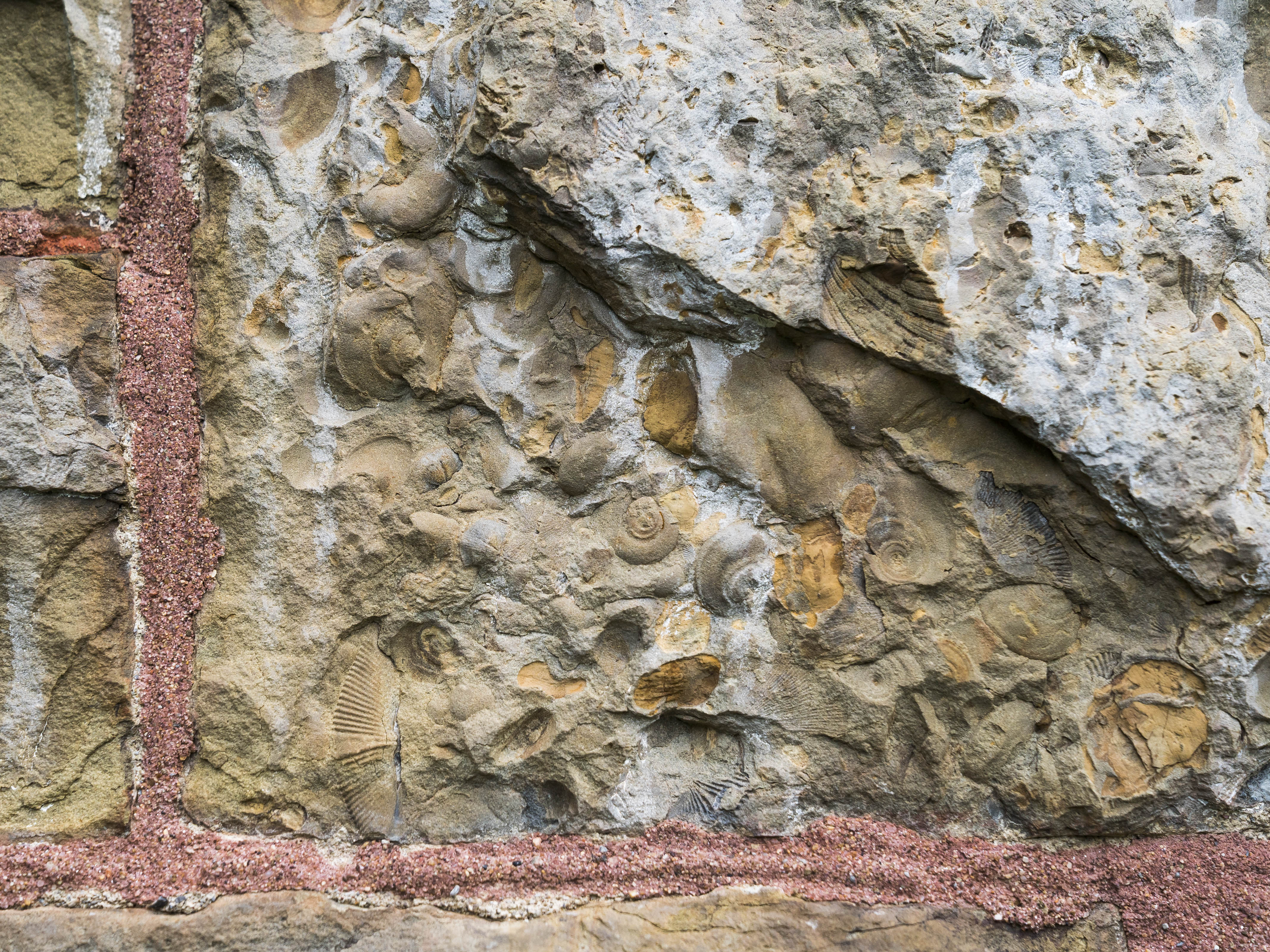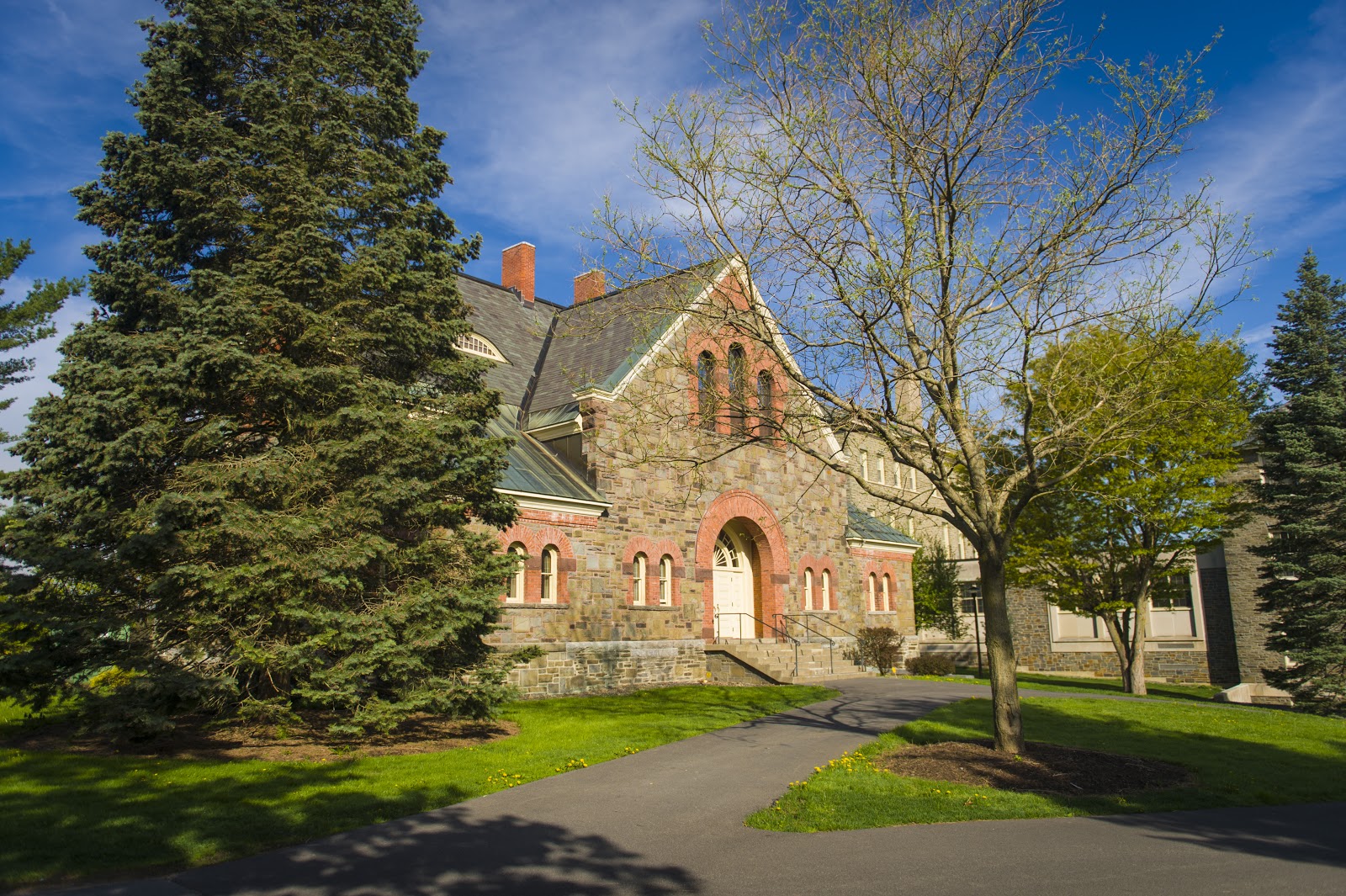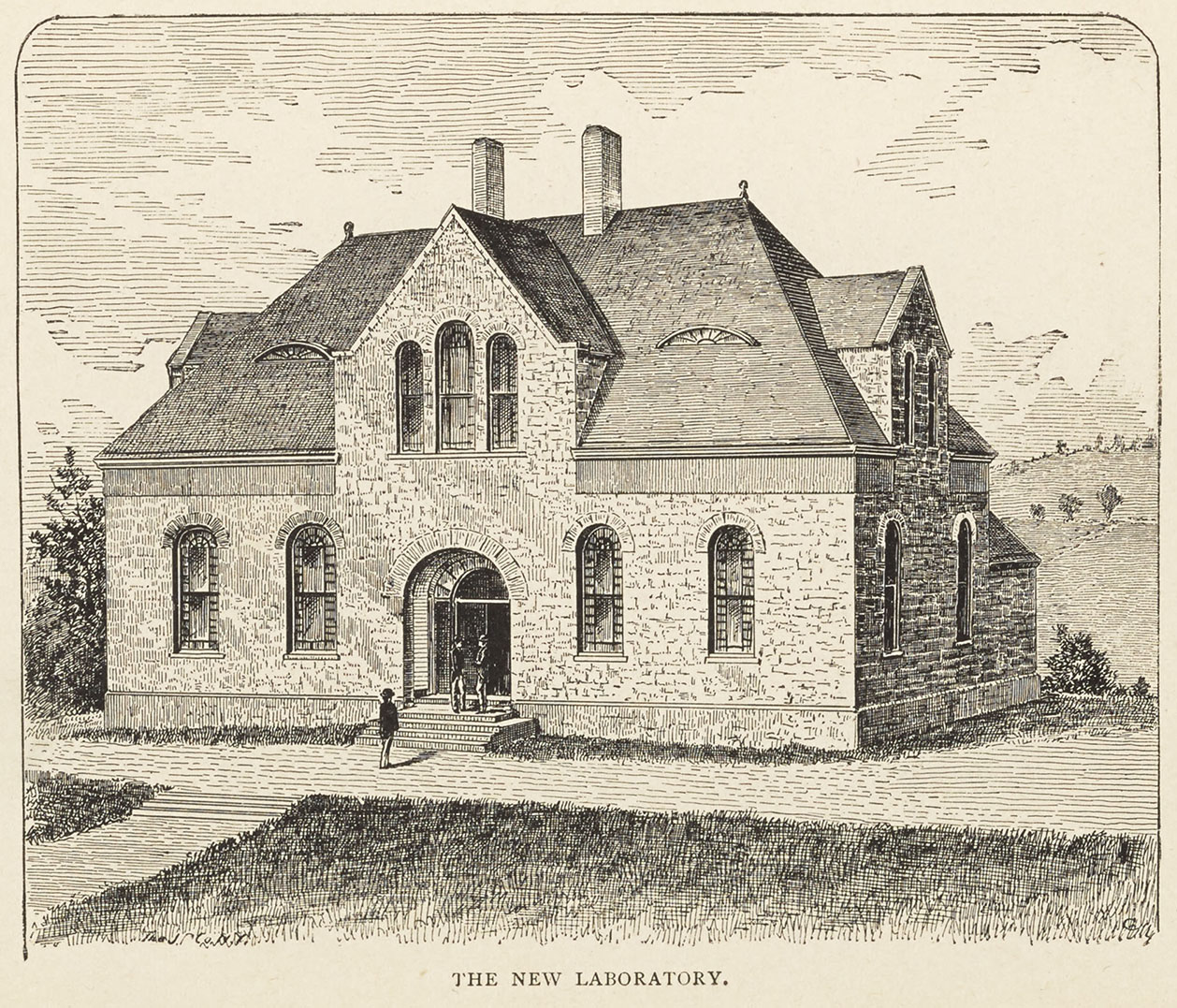
“The New Laboratory,” Salmagundi yearbook, 1886.
Colgate’s historic buildings exist in harmony with the lush forests of the surrounding hills. From academic structures such as McGregory and Alumni Hall to the activity-centered James C. Colgate Student Union, each has been designed to meet the needs of students across eras.
The Chemistry Laboratory, now known as Hascall Hall, was originally constructed in 1884 after President Ebenezer Dodge combined his personal investment with financial gifts from Samuel Colgate and other donors to create the university’s first dedicated classroom building.1 This building, devoted to scientific study, marked a moment of change for the university as it expanded its theological and classically-focused curriculum.
One-and-half stories high, the structure was said to be in the Richardsonian Romanesque-style and, like other early university buildings, it was built with local stone from the quarry above the hill. The new laboratory housed lecture halls of the physical sciences, chemistry, and astronomy departments, and was fitted with all of the trappings of turn-of-the-century scientific research, such as a pneumatic trough, a draft chamber for sulphuretted hydrogen, a “75-light Springfield gas machine,” and a large cistern in the cellar, fed by a spring near West Hall, which provided fresh water for experiments. 3, 4
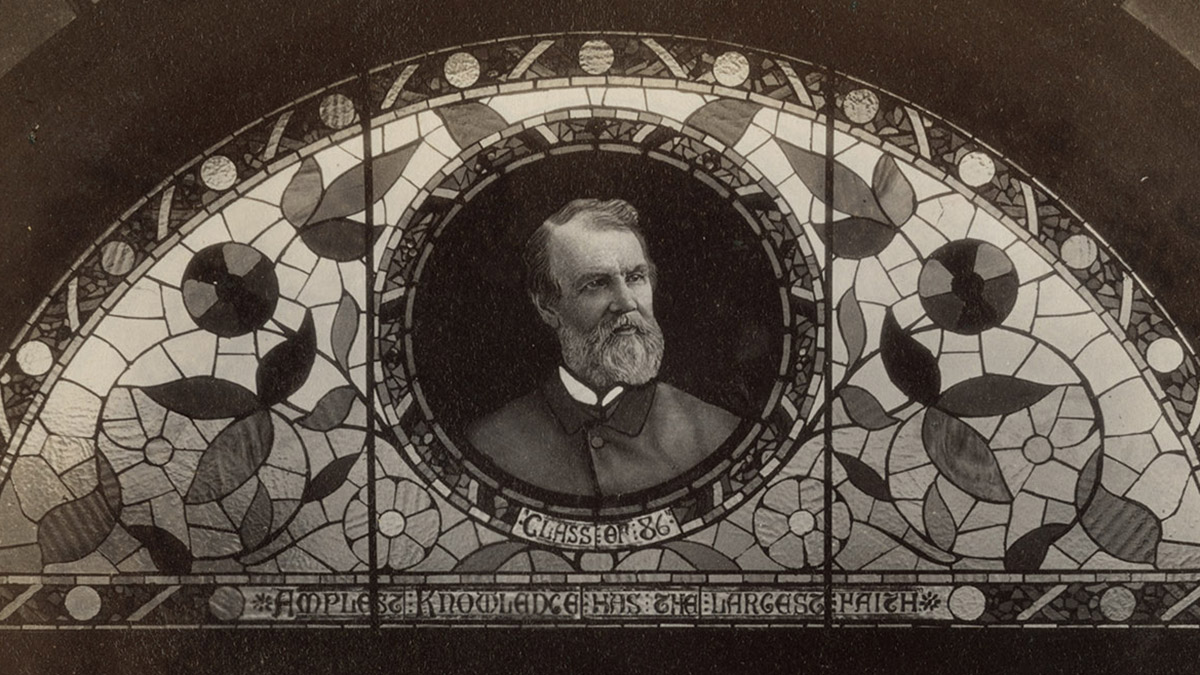
Stained glass window with President Dodge, circa 1891
To honor President Dodge, the Class of 1886 (the first class to use the building) placed an elaborate stained glass memorial window over the west entrance to the building, complete with a rendering of Dodge’s likeness and the inscription: “Amplest knowledge has the largest faith.”5 Almost a decade after its construction, students continued to express their thanks of President Dodge:
“Our late President, the beloved Dr. Dodge, was a remarkably gifted man, one whose thought was usually in advance of the age in which he lived. He saw the trend of the times and the necessity of increased scientific study if we would compete with other colleges. It is to Dr. Dodge that the Chemical Laboratory owes its existence.” 6
Additions to the building
After the university matched Andrew Carnegie’s $20,000 donation for the “enlargement and improvement of the Chemical Laboratory” in 1906, the university added the Carnegie wing extension on the east side of the hall.10 The new building now featured laboratories for quantitative and qualitative analysis, a large lecture room, and a mineralogy room.11


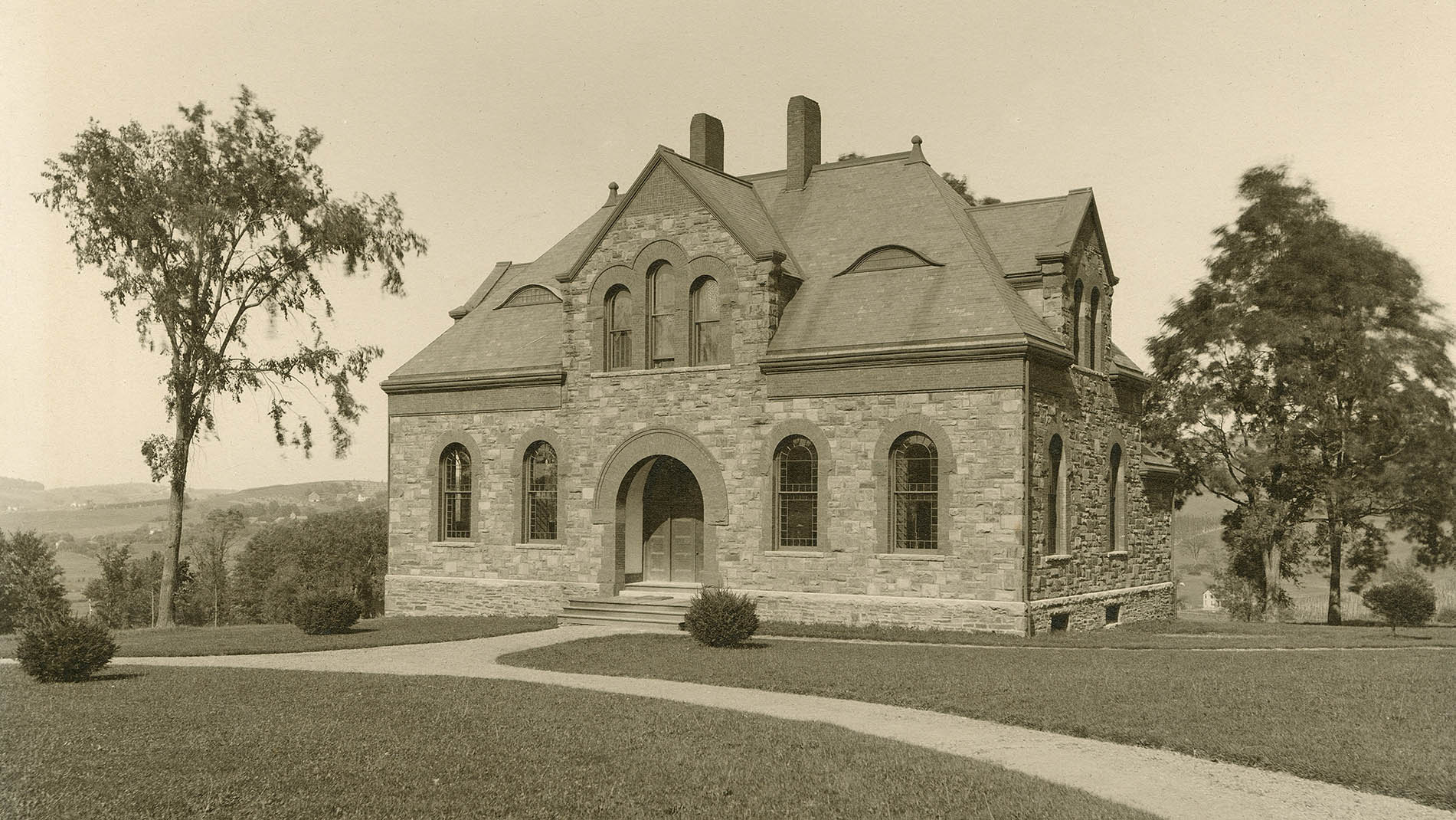


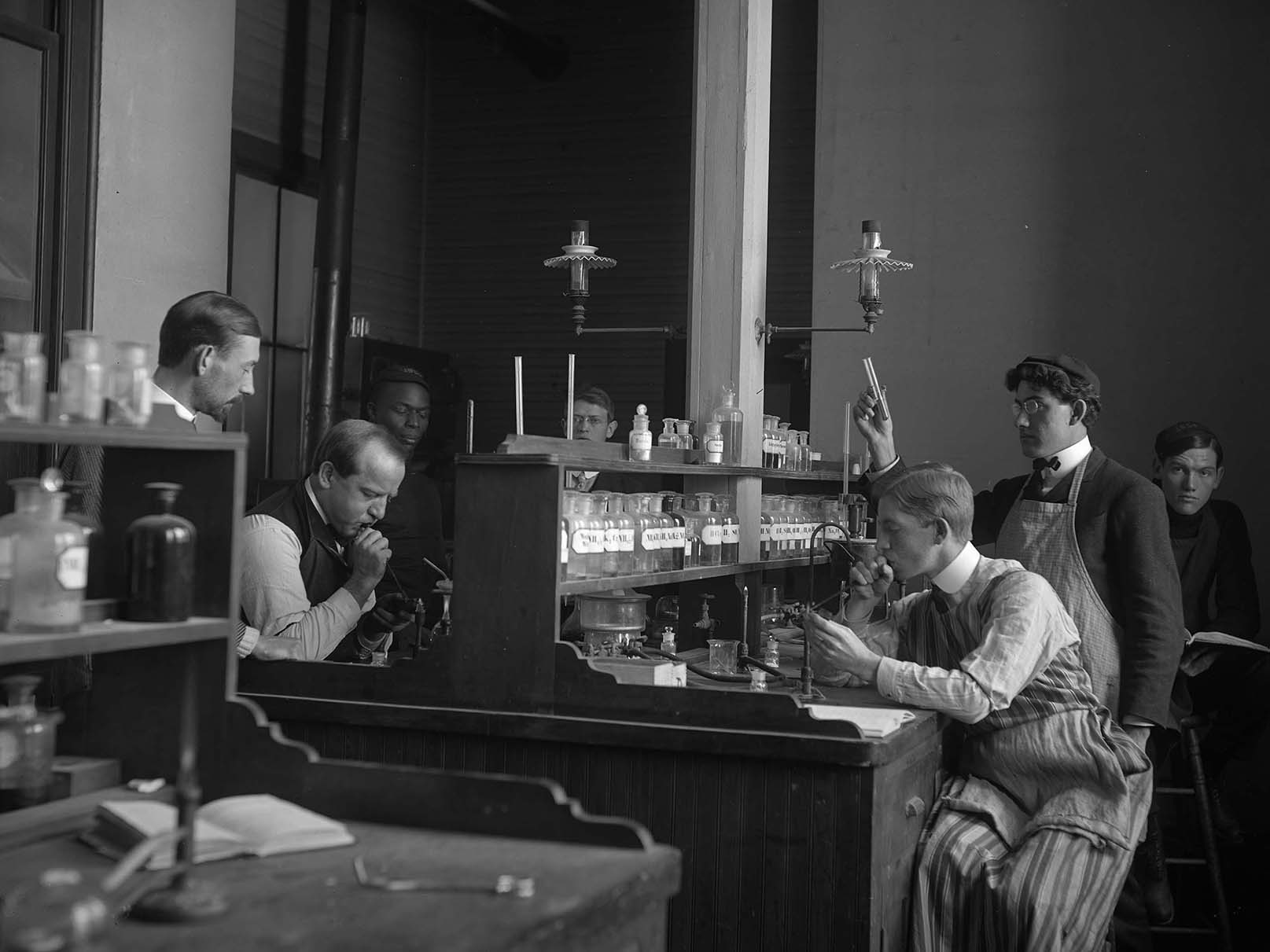
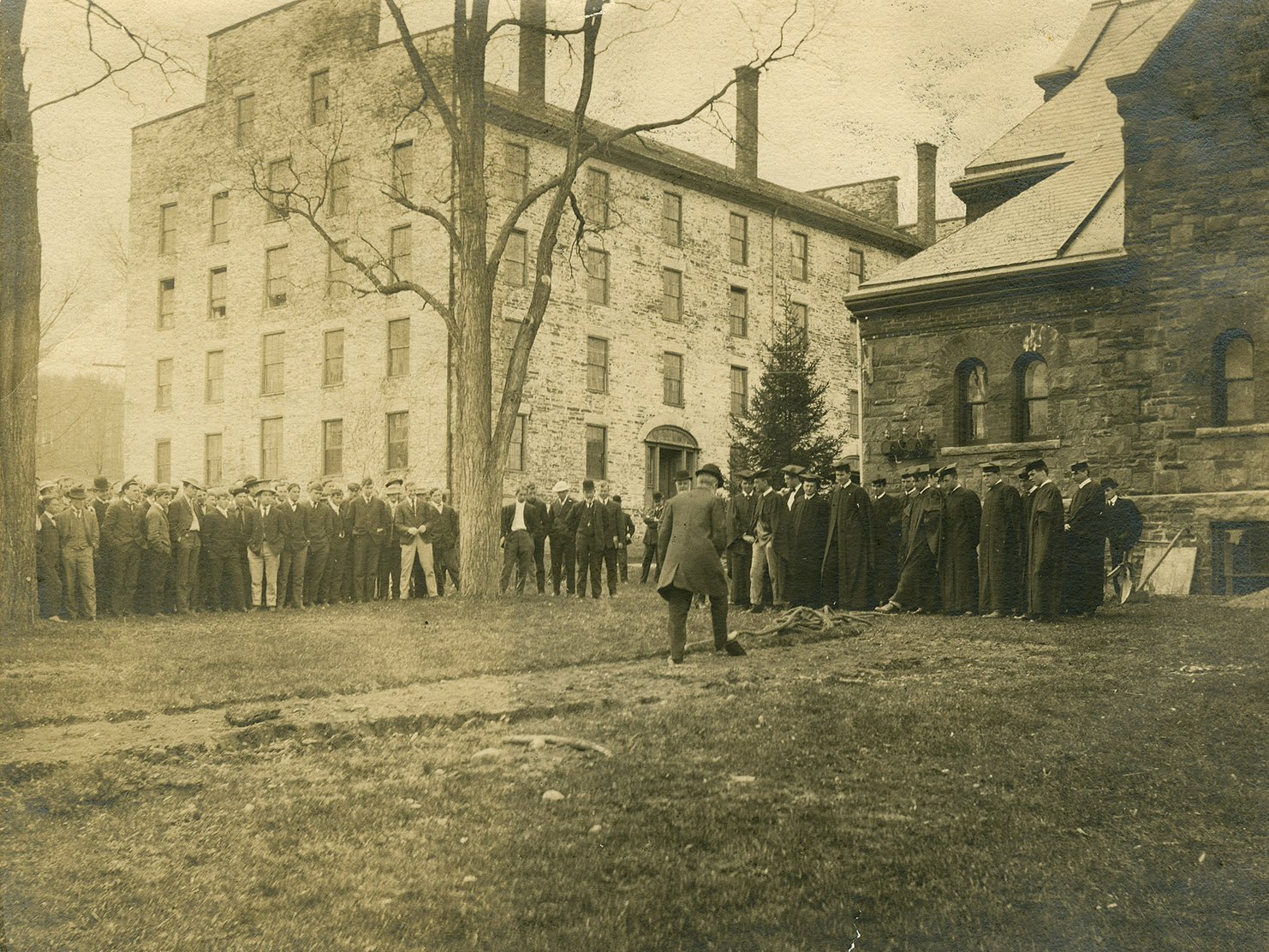
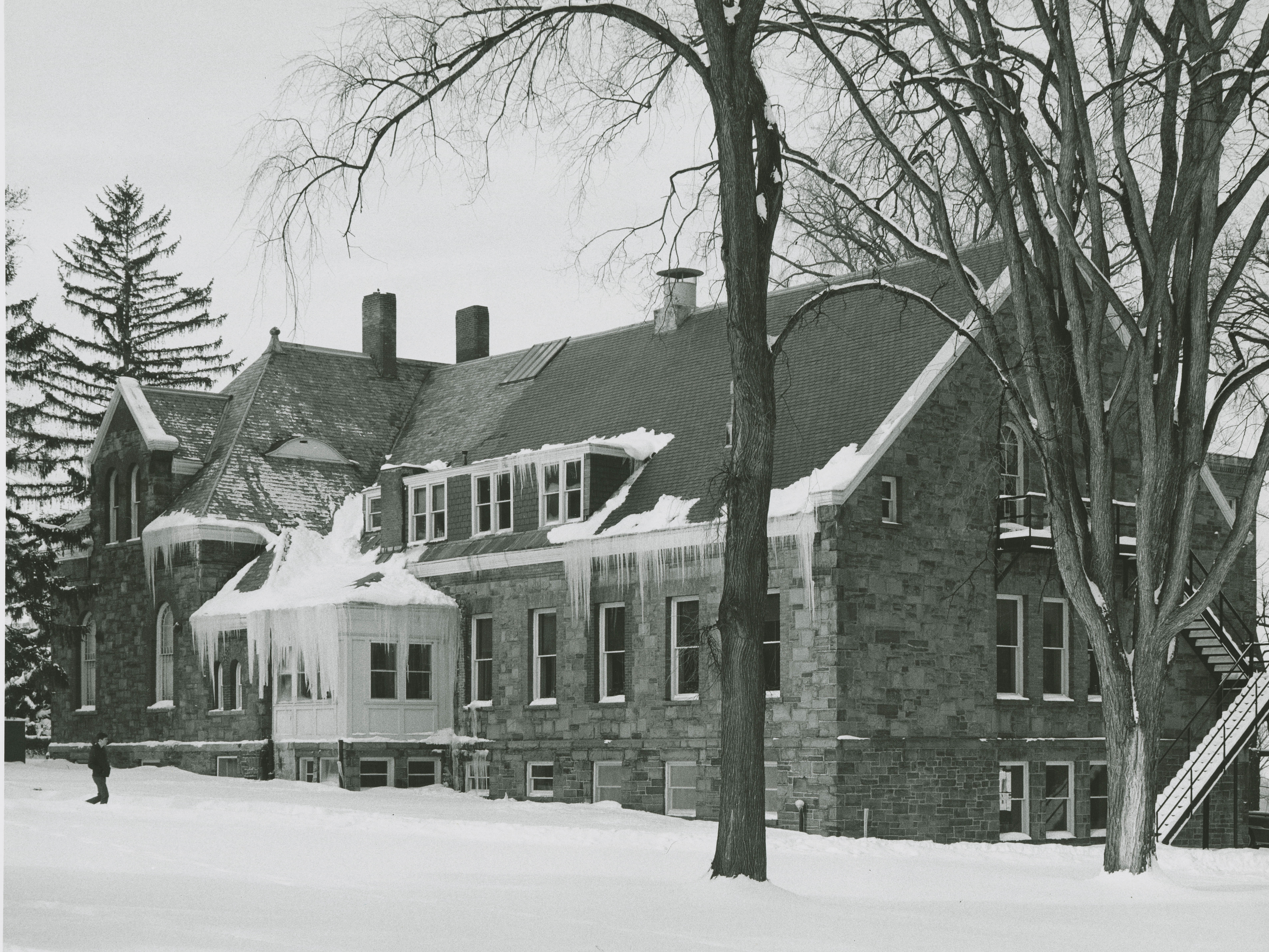
![Interior of art studio in Biology Building [Hascall Hall]](/sites/default/files/2018-11/A1000_b016_f250_003.jpg)
